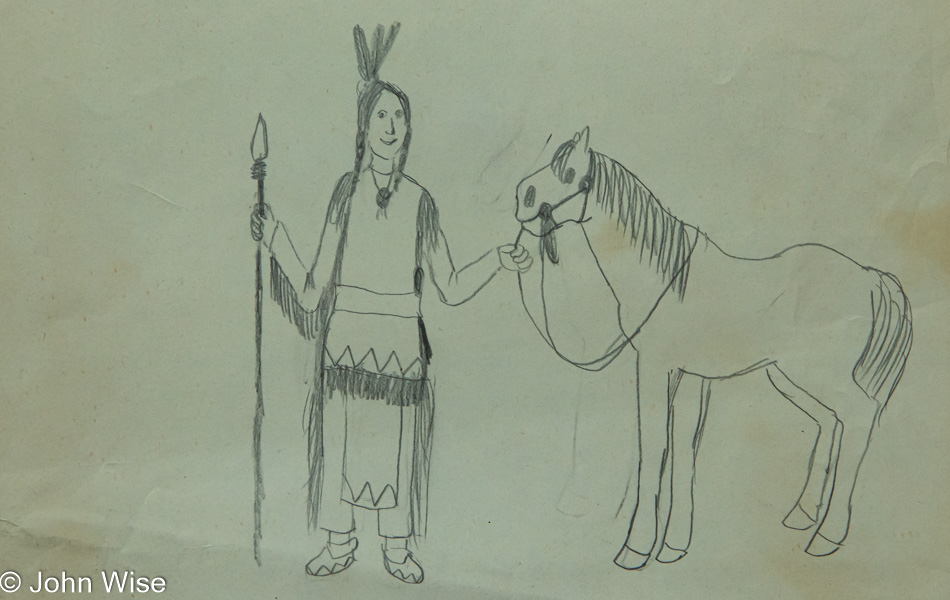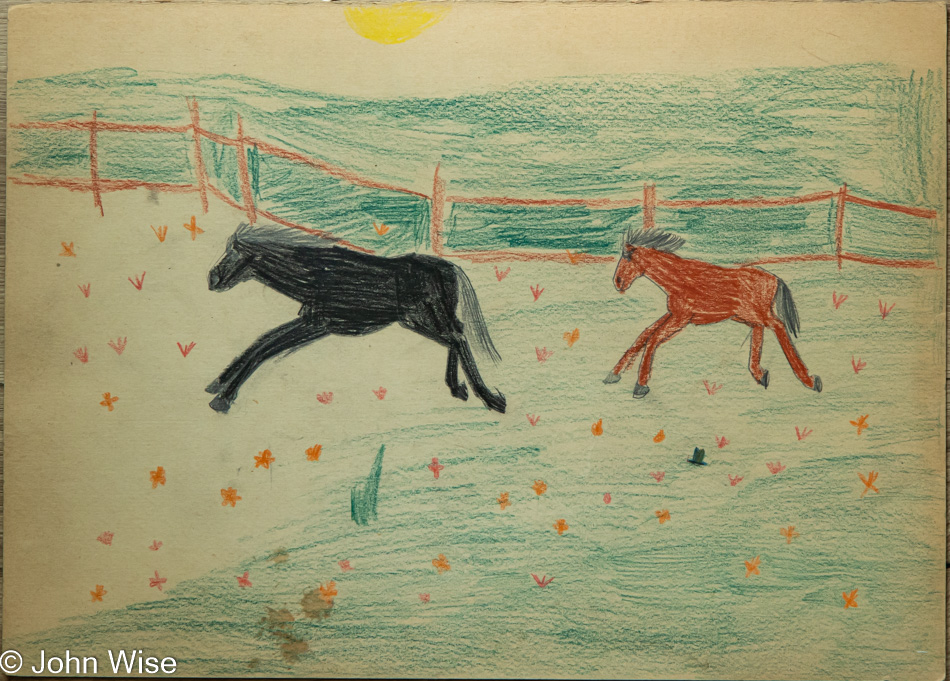
Last summer, in late May and early June, I found myself in Germany helping deal with the belongings my mother-in-law Jutta had amassed at home. My job was to sort, make sense of, preserve, recycle, donate, or toss those things that were no longer required by anyone, considering that Jutta had entered assisted living. Among the lifetime belongings of Jutta was a portfolio of close to a hundred drawings from her daughter Caroline Wise née Engelhardt of Frankfurt, Germany. From the time she was two years old, right up until Caroline was 13, Jutta put these drawings into safekeeping. My mother-in-law was pretty meticulous about saving these and dating them as Caroline presented mom with her art. This very first piece was drawn the month before Caroline turned three. I’m finally getting around to posting this now as it sat languishing as a draft for too long, just as they had in a folder for nearly 40 years among Jutta’s things.

Five months later, Caroline was mastering people, realistic hands, castles, and blue skies. This is from April 1971, and Caroline is 40 months old.

At four years old, Caroline was drawing patterns, while over in America, I was probably still eating dirt at nine years old.

By the time Caroline Wise was five, she took a liking to American Indians with horses starting to show up in her imagination.

It’s 1974 when if I had to guess, Caroline drew this image of her mom.

I don’t know what happened in 1975, but there wasn’t a single image from that year, and so here we are jumping right into 1976 and a nine-year-old little girl in love with ponies and Native Americans.

1976 must have been the year Caroline was introduced to watercolors at school, or maybe mom bought her a set?

Caroline wrote down this story in 4th grade (at 9 or 10 years old). Back then, a typical exercise in German class would be that the teacher (Mrs. Hirsch) read a short story to the class, and the children had to “re-narrate” it in their own words. The story titled The Careful Dreamer is about a traveler of the old days who shares a room in an inn with someone else. He took off his clothes and got ready for bed, but before he lay down, he strapped his slippers to his feet. The traveler’s roommate asked him why and got the answer, “I once dreamed that I stepped on broken glass, and it was so painful that I never want to sleep barefoot again!” According to Mrs. Hirsch’s comment, Caroline did a great job.

This was one of a few images without a date, but I was finding her fascination with horses interesting as although I knew she’d read Misty of Chincoteague and Black Beauty, I can’t say she ever shared with me just how deep her love of horses was.

It’s 1977, and the year Caroline will turn ten years old in mid-December; I think her sense for the abstract was something that should have been developed.

More horses, this time from 5th grade.

Maybe this was foreshadowing that Caroline would one day see ponies in the mountains.

During the summer of 1979, the horse and Native American theme continued.

Another image without a date.

Crayons were one of the first things Caroline asked me to get for her from the American PX, a big box of 96 colors. It was probably around this time in 1981 when Caroline had to give up drawing and art to take her studies seriously.

A rich woman throws a coin at a beggar woman with a child. This was the last image in the portfolio and a fitting one as the woman I would meet in 1989 was very aware of injustice, violence, and the social ills that fail so many people.

All of these things, including the teddy bear above that belonged to Caroline at one time, are headed to the scrap heap where maybe pieces will be recycled while some of it burned. They were never destined to find their way into a museum, and while it might feel tragic at first glance that they should just be put in the trash, it’s ultimately where everything we own and create ends up. Maybe here on the internet, they’ll last longer than they might have otherwise.






